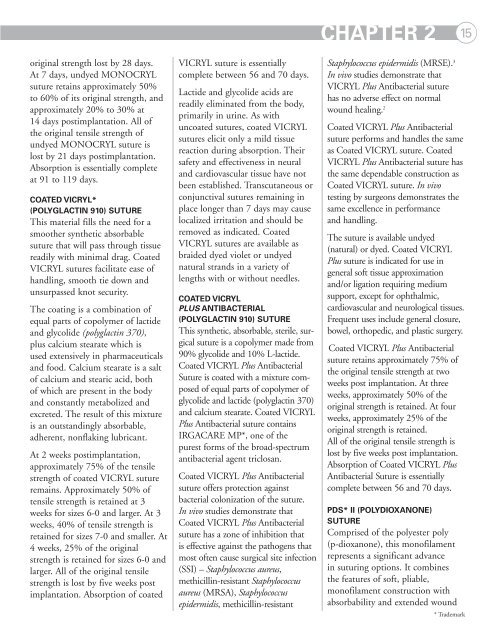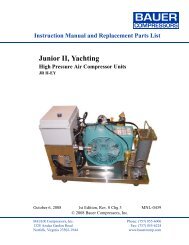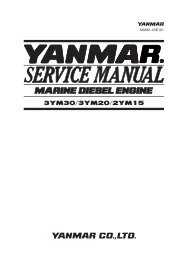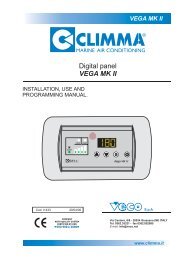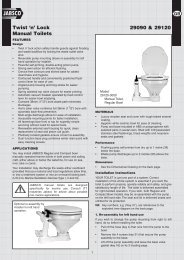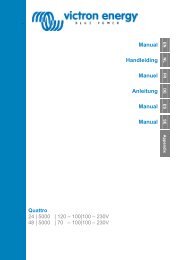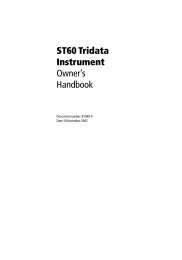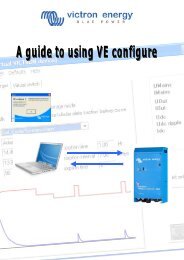Wound Closure Manual (PDF) - Penn Medicine
Wound Closure Manual (PDF) - Penn Medicine
Wound Closure Manual (PDF) - Penn Medicine
You also want an ePaper? Increase the reach of your titles
YUMPU automatically turns print PDFs into web optimized ePapers that Google loves.
original strength lost by 28 days.<br />
At 7 days, undyed MONOCRYL<br />
suture retains approximately 50%<br />
to 60% of its original strength, and<br />
approximately 20% to 30% at<br />
14 days postimplantation. All of<br />
the original tensile strength of<br />
undyed MONOCRYL suture is<br />
lost by 21 days postimplantation.<br />
Absorption is essentially complete<br />
at 91 to 119 days.<br />
COATED VICRYL*<br />
(POLYGLACTIN 910) SUTURE<br />
This material fills the need for a<br />
smoother synthetic absorbable<br />
suture that will pass through tissue<br />
readily with minimal drag. Coated<br />
VICRYL sutures facilitate ease of<br />
handling, smooth tie down and<br />
unsurpassed knot security.<br />
The coating is a combination of<br />
equal parts of copolymer of lactide<br />
and glycolide (polyglactin 370),<br />
plus calcium stearate which is<br />
used extensively in pharmaceuticals<br />
and food. Calcium stearate is a salt<br />
of calcium and stearic acid, both<br />
of which are present in the body<br />
and constantly metabolized and<br />
excreted. The result of this mixture<br />
is an outstandingly absorbable,<br />
adherent, nonflaking lubricant.<br />
At 2 weeks postimplantation,<br />
approximately 75% of the tensile<br />
strength of coated VICRYL suture<br />
remains. Approximately 50% of<br />
tensile strength is retained at 3<br />
weeks for sizes 6-0 and larger. At 3<br />
weeks, 40% of tensile strength is<br />
retained for sizes 7-0 and smaller. At<br />
4 weeks, 25% of the original<br />
strength is retained for sizes 6-0 and<br />
larger. All of the original tensile<br />
strength is lost by five weeks post<br />
implantation. Absorption of coated<br />
VICRYL suture is essentially<br />
complete between 56 and 70 days.<br />
Lactide and glycolide acids are<br />
readily eliminated from the body,<br />
primarily in urine. As with<br />
uncoated sutures, coated VICRYL<br />
sutures elicit only a mild tissue<br />
reaction during absorption. Their<br />
safety and effectiveness in neural<br />
and cardiovascular tissue have not<br />
been established. Transcutaneous or<br />
conjunctival sutures remaining in<br />
place longer than 7 days may cause<br />
localized irritation and should be<br />
removed as indicated. Coated<br />
VICRYL sutures are available as<br />
braided dyed violet or undyed<br />
natural strands in a variety of<br />
lengths with or without needles.<br />
COATED VICRYL<br />
PLUS ANTIBACTERIAL<br />
(POLYGLACTIN 910) SUTURE<br />
This synthetic, absorbable, sterile, surgical<br />
suture is a copolymer made from<br />
90% glycolide and 10% L-lactide.<br />
Coated VICRYL Plus Antibacterial<br />
Suture is coated with a mixture composed<br />
of equal parts of copolymer of<br />
glycolide and lactide (polyglactin 370)<br />
and calcium stearate. Coated VICRYL<br />
Plus Antibacterial suture contains<br />
IRGACARE MP*, one of the<br />
purest forms of the broad-spectrum<br />
antibacterial agent triclosan.<br />
Coated VICRYL Plus Antibacterial<br />
suture offers protection against<br />
bacterial colonization of the suture.<br />
In vivo studies demonstrate that<br />
Coated VICRYL Plus Antibacterial<br />
suture has a zone of inhibition that<br />
is effective against the pathogens that<br />
most often cause surgical site infection<br />
(SSI) – Staphylococcus aureus,<br />
methicillin-resistant Staphylococcus<br />
aureus (MRSA), Staphylococcus<br />
epidermidis, methicillin-resistant<br />
CHAPTER 2 15<br />
Staphylococcus epidermidis (MRSE). 3<br />
In vivo studies demonstrate that<br />
VICRYL Plus Antibacterial suture<br />
has no adverse effect on normal<br />
wound healing. 2<br />
Coated VICRYL Plus Antibacterial<br />
suture performs and handles the same<br />
as Coated VICRYL suture. Coated<br />
VICRYL Plus Antibacterial suture has<br />
the same dependable construction as<br />
Coated VICRYL suture. In vivo<br />
testing by surgeons demonstrates the<br />
same excellence in performance<br />
and handling.<br />
The suture is available undyed<br />
(natural) or dyed. Coated VICRYL<br />
Plus suture is indicated for use in<br />
general soft tissue approximation<br />
and/or ligation requiring medium<br />
support, except for ophthalmic,<br />
cardiovascular and neurological tissues.<br />
Frequent uses include general closure,<br />
bowel, orthopedic, and plastic surgery.<br />
Coated VICRYL Plus Antibacterial<br />
suture retains approximately 75% of<br />
the original tensile strength at two<br />
weeks post implantation. At three<br />
weeks, approximately 50% of the<br />
original strength is retained. At four<br />
weeks, approximately 25% of the<br />
original strength is retained.<br />
All of the original tensile strength is<br />
lost by five weeks post implantation.<br />
Absorption of Coated VICRYL Plus<br />
Antibacterial Suture is essentially<br />
complete between 56 and 70 days.<br />
PDS* II (POLYDIOXANONE)<br />
SUTURE<br />
Comprised of the polyester poly<br />
(p-dioxanone), this monofilament<br />
represents a significant advance<br />
in suturing options. It combines<br />
the features of soft, pliable,<br />
monofilament construction with<br />
absorbability and extended wound<br />
* Trademark


